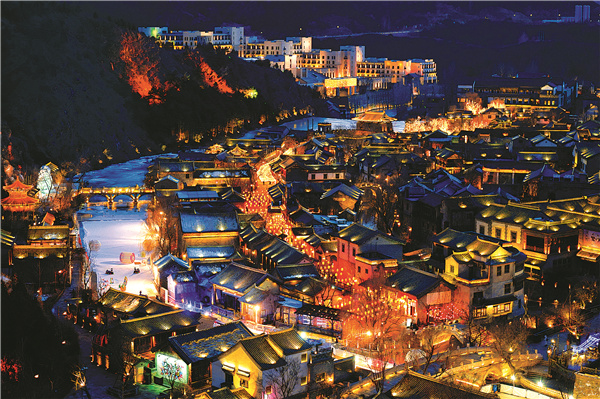
BEIJING — Short trips are increasingly popular in China because of sporadic cases of COVID-19 which prevent people from traveling afar.
Frequent traveler Qi Xiaoya has a sweet tooth and enjoys visiting dessert shops in different cities to sample delicious cakes.
When staying in a five-star hotel, she treats it as a destination, enjoying the weather and the pleasures of the foods offered by restaurants.
“Travel experience counts. I like to discover the beauty of the destination itself and its residents during travel,” says Qi, who lives in Shanghai. The shutterbug records her travel experiences with her camera.
She prefers to have a staycation in Shanghai and travel to the nearby Jiangsu and Zhejiang provinces.
Indeed, staycations and short trips are increasingly popular because of sporadic cases of COVID-19 in China which prevent people from traveling afar.
Chinese tourism website Mafengwo recently unveiled a report about short trips of no more than three days, revealing that younger visitors enjoy such travel.
The report said visitors’ various interests made their short trips more vibrant. About 25 percent of the subjects said they made a trip because of a specific experience, such as a boundless swimming pool.
While 17 percent traveled in search of delicious food, about 23 percent chose their destination based on outdoor sports.
The appeal of local holiday resorts
As a part of the preventive measures against COVID-19, many Chinese cities including Beijing have encouraged people to stay locally for the Spring Festival holiday, offering them the choice of a staycation.
Beijing WTown is popular among those who yearn for a short getaway from the hustle-and-bustle. The majority of its visitors are young Chinese, and parents who travel with children, from Beijing and surrounding cities.
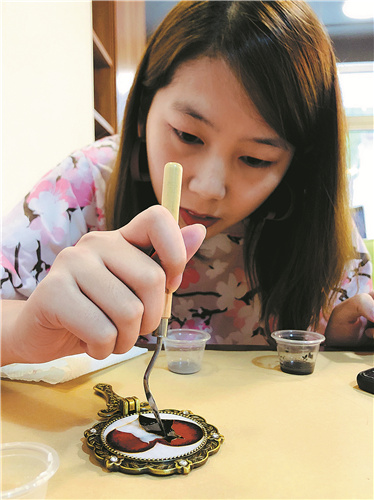
At the water town, tourists can enjoy traditional architecture that blends styles of the country’s southern and northern regions.
After scaling the sheer heights of the Simatai section of the Great Wall, they can relax themselves by soaking in the town’s natural hot spring.
The water town is celebrating its annual temple fair with traditional folk activities until Feb 15. Lunar New Year fell on Feb 1 this year.
Visitors can experience a festive atmosphere that’s hard to find in big cities, with street vendors hawking their goods and a group of yangge (a folk dance) dancers.
They can try different crafts and skills, such as how to make paper-cuts for window decorations and write Spring Festival couplets.
They can also play winter sports such as driving bumper cars on the ice and try their hand at ice fishing.
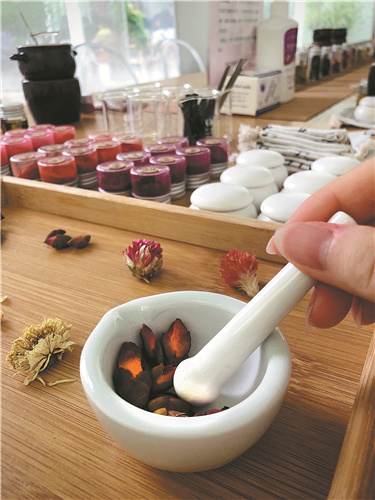
Parks are ready for local tourists
“The popularity of staycations means that residents are willing to explore their own city for fun. It has encouraged us to create more tourism products that focus on an immersive experience,” says Zheng Fang, vice-president of Haichang Ocean Park Holdings Ltd, which runs 10 theme parks across China.
Shanghai Haichang Ocean Park has prepared various festive performances including lion dances for the Spring Festival holiday.
At night, visitors can watch a parade with festooned vehicles and a fantastic immersive light show above water, combined with fireworks and augmented reality scenes.
They can have a family reunion dinner there, or simply go to a temple fair to sample different snacks from across China.
The Chinese name of killer whales is hujing, which literally means “tiger whales”. The cute marine animal is a favorite among Chinese tourists because 2022 is the Year of Tiger.
The staff members will introduce the park’s killer whales and scientific knowledge about them to the audience.
The park also carries strict preventive measures against COVID-19, such as noncontact services and regular disinfections.

A unique difference of Legoland Discovery Center Beijing is that adults must be accompanied by a child to enter.
The indoor amusement park’s recreation facilities and interactive games are especially designed for both parents and children, so that they can spend some quality time together.
Most of the visitors are local residents-parents and children who age between 3 and 10. Peak seasons are summer and winter vacations and the Spring Festival holiday.
They can also enjoy a miniature Beijing made from over 510,000 Lego bricks-including the city’s landmarks, ranging from historical sites like the Forbidden City, to the National Stadium and the central business district’s skyscrapers.
The center’s activities combine education with recreation, with a wide range of topics such as biodiversity and protecting China’s coastline, so that children can learn knowledge and have fun via building with Lego bricks.
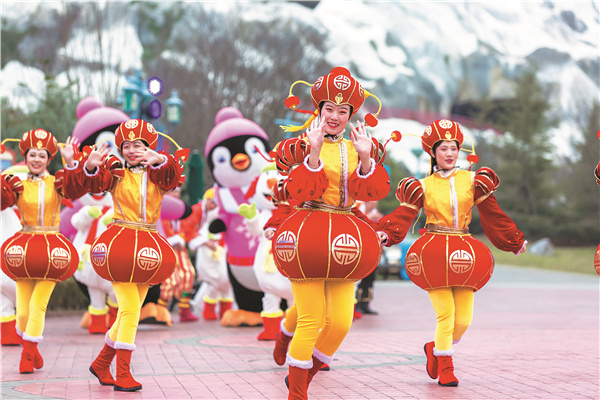
There are also events with the themes of the Beijing 2022 Olympic Winter Games and the Lunar New Year.
Children can dress up in different costumes and build winter sports gear such as ice skates with Lego bricks.
The center regularly invites experts from various fields to share their stories with children. For example, in February, children can learn about the culture and history of winter sports in China and the do’s and don’ts for exercise in winter, via a lecture.
Culture legacy and intangible cultural heritage lure tourists
Culture experiences and activities are also appealing to visitors.
In Suzhou, Jiangsu province, Yan Wei’s routine is to guide small tour groups-no more than 12 travelers, to the city’s traditional gardens and museums, with informative commentaries.
“Such in-depth tours with quality commentaries are the prevailing trend. The demand is higher in cities full of culture and history, like Beijing, Shanghai and Xi’an, Shaanxi province,” says Yan, president of Suzhou Tour Guide Association, who has been a tour guide for 22 years.
“The experience is subject to a guide’s ability, such as a reserve of knowledge and route designs.”
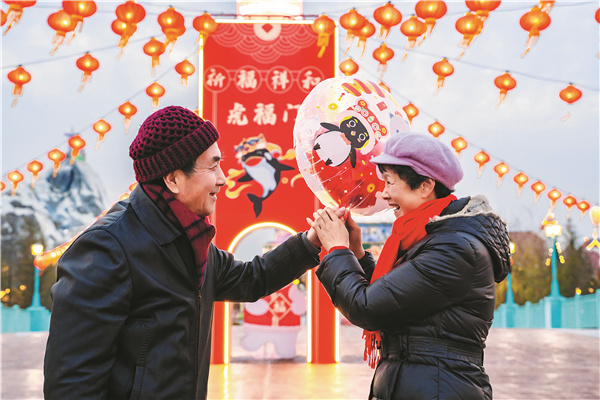
According to him, because it’s important to keep social distance during the ongoing COVID-19, small group tours and independent travel have become more popular.
Many of his guests are middle aged, and already have an economic base. Some are from Generation Z born between the mid-1990s and the early 2010s, who are willing to pay for knowledge. Some are locals or those from neighboring cities.
“Parents and children like to come together. It’s like a culture and history class, vividly taught on-site in places of historic interest and museums,” he says.
“The commentary of Suzhou’s gardens combines various subjects, ranging from aesthetics and literature to calligraphy. Such an experience is very different from listening to an audio tour guide device,” he says.
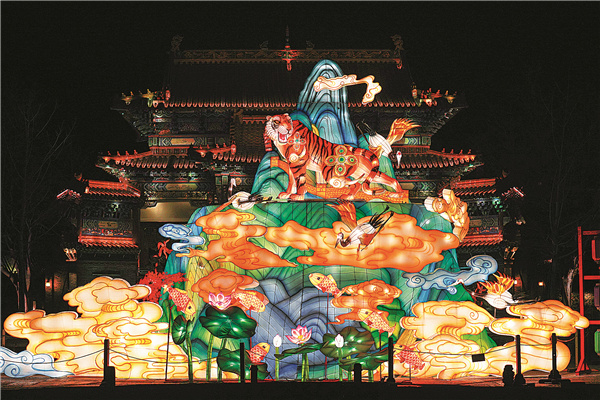
His newest tourism product is a hiking route in which he guides local parents and children to explore the city’s historical sites together on weekends.
Beijinger Zhai Meng offers experience classes of simple skills relating to several traditional intangible cultural heritages. After the class, guests will get their handmade works, such as a cloisonne pocket mirror or traditional Chinese lip balm.
Her father, who has been a chef for about 40 years, teaches how to make authentic Beijing snacks, such as noodles served with fried bean sauce and spring pancakes.
Zhai and her father’s experience classes are available on tourism platforms such as vacation rental provider Airbnb. She started to learn calligraphy and seal cutting when she was a primary school student.
Such classes are popular among inbound tourists, who want to know about Chinese culture and cuisine during their trips.
As inbound travel is suspended in China due to the global COVID-19 pandemic, Zhai says guests are now all domestic travelers, including locals, and some are foreign citizens of Chinese origin, who live in China.
Other guests include companies looking for team-building activities and study tours for primary and middle school students.
“I find that more of China’s Generation Z are into our traditional culture. It’s not because that their parents have paid for the classes, but due to their own interest,” says Zhai, who runs a small studio in the city’s downtown hutong.
Wu Liyun, an associate professor of the China Academy of Culture and Tourism at Beijing International Studies University, says: “More and more young Chinese like to have an immersive and in-depth travel experience in one destination, rather than have a rushed and superficial trip.”
“The challenge for tourism operators is to provide good-quality tourism products and services that visitors need in an innovative way,” she says.
She suggests that visitors abide by personal protection rules, know about the destination’s rules of COVID-19 prevention and control in advance and avoid visiting crowded places. They can also have a road trip or even drive a recreational vehicle.
He Qiongfeng, head of the Institute of Data Analysis, China Tourism Academy, attributes the popularity of in-depth staycation and short trips to Chinese travelers’ yearning to enjoy a good life.
He says the ongoing pandemic has changed the traveling behaviors and tastes of visitors, bringing challenges as well as opportunities to the tourism industry.
“As the domestic tourism market is recovering gradually, tourism products and the form of business operation will demonstrate more in aspects of culture, local lifestyle and the deeper involvement of visitors,” he says.
RELATED STORIES
Hotels authorized to offer staycations may fully operate, forego guests’ COVID-19 test results
DOT pushes to open staycations, lifting of age restrictions for travelers














































